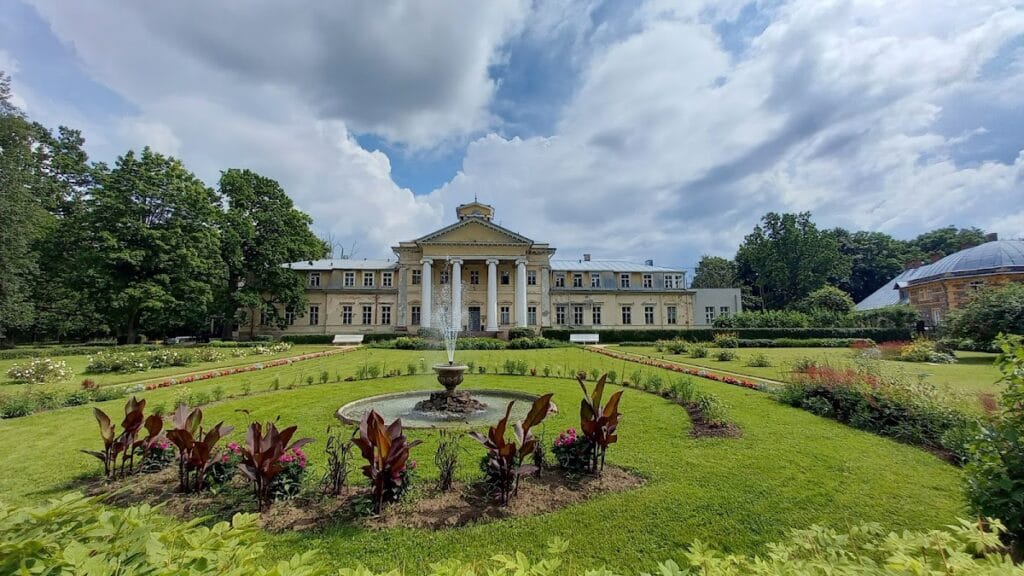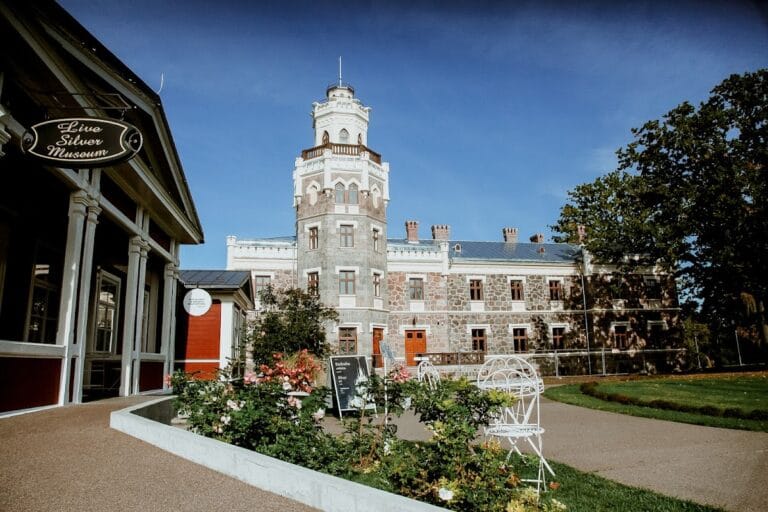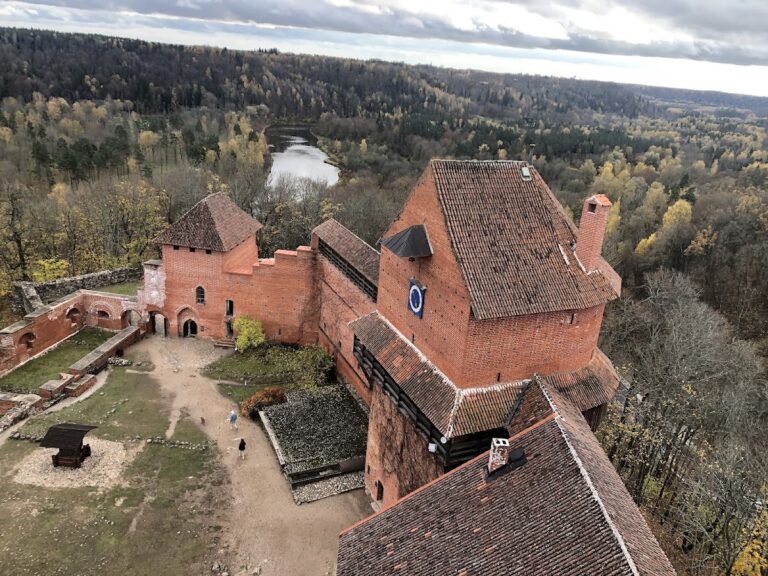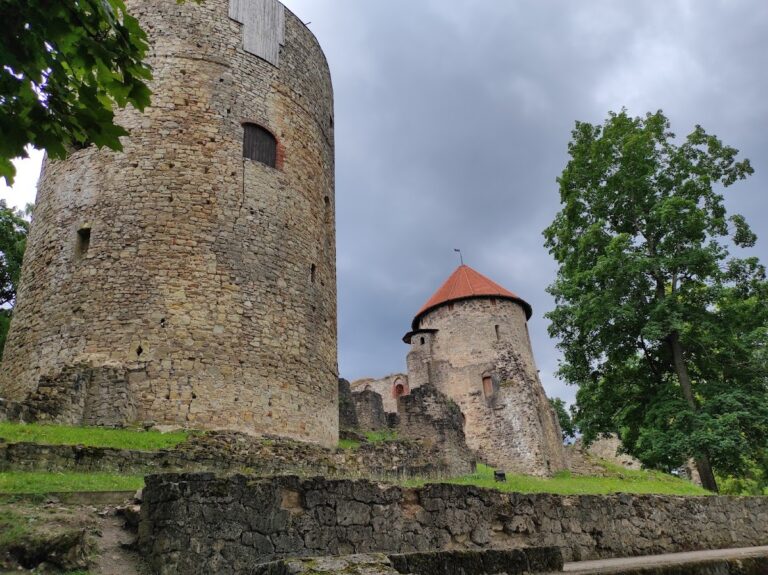Krimulda Castle: A Medieval Fortress in Latvia
Visitor Information
Google Rating: 4.5
Popularity: Low
Google Maps: View on Google Maps
Official Website: tourism.sigulda.lv
Country: Latvia
Civilization: Unclassified
Remains: Military
History
Krimulda Castle, situated within the municipality of Sigulda in present-day Latvia, was originally constructed by medieval Livonian builders in the 13th century. This stronghold formed part of the Riga Archbishopric’s domain and served as an auxiliary fortress to the nearby Turaida Castle, both positioned strategically along the Gauja River.
The earliest phase of Krimulda Castle’s history dates back to the mid-1200s, with construction initiated under the guidance of Archbishop Albert II Suerbeer and overseen by the Riga Cathedral Chapter. Documents first mention Krimulda in 1312, describing its status amid the turbulent relations with the Livonian Order, who at one point occupied the fortress. Unlike many castles built primarily for military conquest, Krimulda appears to have held more administrative and economic functions, reflecting its connection to the church authorities managing regional affairs.
During the 16th century, the castle witnessed conflict and shifts in sovereignty. In 1556, it was attacked and plundered amid internal struggles within Livonia. Following the Reformation and secularization of the archbishopric’s territory in 1561, Krimulda came under the control of the Duchy of Livonia, which was governed by the Polish–Lithuanian Commonwealth. Further turmoil struck during the Polish-Swedish wars, and in 1601, the castle was set ablaze—reports vary as to whether retreating Swedish or Polish troops were responsible. From that point on, Krimulda ceased to function as a military fortress and gradually passed into private hands.
Ownership transferred through prominent noble families in the 17th century, including the Oxenstiernas and later the Helmersen family. By the 19th century, the castle remained in ruins until Russian Lieutenant General Johann Georg von Lieven acquired the property. Between 1861 and 1863, von Lieven undertook archaeological excavations and began restoring parts of the castle. His work coincided with a visit by Tsar Alexander II in 1862, reflecting renewed interest in the site’s historical legacy. Restoration efforts included adding windows crafted in a romanticized Gothic style, which contributed to the partially reconstructed appearance of the ruins seen today. Since 2002, the estate has been privately held and repurposed as a rehabilitation center.
Remains
Krimulda Castle occupies a naturally defensible plateau overlooking the Gauja River valley, elevated approximately 90 meters above sea level and surrounded on three sides by steep slopes rising about 70 meters. The roughly rectangular plateau, stretching about 170 by 120 meters, was oriented from southwest to northeast and enclosed within substantial defensive walls aligned with the cardinal directions.
At the heart of the complex stood the main castle, originally a tower structure that expanded over time into a manor-like residence. Its southern corner features a sizeable, rectangular building roughly 54 by 17 meters, rising up to three stories. The ground floor contained spaces for kitchen services and storage, while the upper floors housed living quarters and representative halls, including a refectory for communal meals. The top attic level was designed with defensive purposes in mind.
A prominent gate tower on the western side, about 9.5 meters wide, safeguarded access with evidence of multiple gates—possibly three—as well as two internal rooms. The entrance to the castle was reached by crossing a wooden bridge equipped with a drawbridge mechanism, which spanned a defensive ditch on the southwest side, adding another layer of security.
Surrounding the main castle was an outer bailey, or forecourt, enclosed by thick stone walls, between 1.5 and 2 meters wide. Inside this walled courtyard stood wooden buildings dedicated to economic activities and storage, although none of these structures have survived. A small, square defensive tower once stood on the northern perimeter, augmenting the castle’s fortifications.
Construction mainly employed fieldstones held together with lime mortar, while carefully cut limestone blocks reinforced corners and structural junctions. This differs from the nearby Turaida Castle, which incorporated more brickwork. The castle relied heavily on natural defenses, taking advantage of steep river valleys and the nearby Vikmeste River, a boundary marker with Turaida parish.
By the 19th century, the castle had largely fallen into ruin, with only some walls still standing. Restoration efforts by von Lieven introduced artful, Gothic-inspired window frames in some surviving walls near the southern living quarters, blending archaeological remnants with 19th-century romanticized architectural elements. These partial reconstructions remain visible today, preserving the memory of Krimulda Castle’s medieval past within the landscape.










